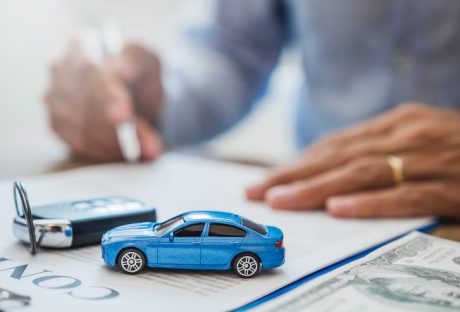Amateur or professional, it doesn’t matter. If you love driving, when you’re behind the wheel you want sleek, sexy, and fun. There are the same cars that are ‘spit’ out year after year, and then there are those worth the wait. If you are a car enthusiast, patience is a virtue as the cars listed below are due out sometime within the next three years.
Some cars may be financially out of reach, but that doesn’t have to be so if you thoroughly research auto insurance quotes online. Saving money on your policy means being able to spend more where it counts – on the vehicle you will love to drive, and love to show off.
2023 Chevy Corvette Z06
Expected early 2022, the Z06 starts at $85,000 and resonates along the lines of a Ferrari. With a 5.5 liter, V-8 engine, it revs between 8,500 and 9K RPM, it will get you wherever you’re going fast with its 600 plus horsepower engine.
2023 Ford Bronco Raptor
If you’re looking for off-road fun, the Raptor is built for you. This SUV is expected to be four-door, have Fox Live Wire dampers (making off-roading a breeze), and 37” all-terrain tires. There will be a rear anti-roll bar, and it will be taller and wider than its younger sibling, the standard Bronco.
2022 Ford Fusion Active
Is it a station wagon or an SUV? Perhaps that’s why they call it a Fusion. This sedan is likely the most practical of the bunch; it will have an 8-speed automatic transmission and is based on the European Mondeo wagon. Prices should start between $30-$40K, making it a highly affordable vehicle.
2024 Honda EV SUV
This vehicle represents a meeting of the minds between Honda and GM as it will be utilizing GM’s Ultrium battery platform. Honda is making an ambitious commitment to eventually sell only electric vehicles. They recently announced that by 2040, they will only be producing battery-electric and hydrogen fuel-cell vehicles.
2022 GMC Hummer EV
Discontinued back in 2010, the Hummer is about to make another appearance on the market. Once known as a gas-guzzling monster, the EV edition is expected to be an all-electric pickup that offers up to a whopping 1000 horsepower. Late for Grandma’s house? No problem, the Hummer EV will get you going 60 mph in 3 seconds flat.
2023 Hyundai RM20 N
Is it any great surprise that new vehicles sound a lot like newfound stars? The 2023 Hyundai RM20 N is expected to rival Nissan Z and Supra in high-performance sports car sleekness and handling. It will produce over 300 horsepower while also providing extreme affordability.
2022 Mercedes-AMG SL-Class
Also called Mercedes-AMG SL, this soft-top convertible is expected to offer all-wheel drive, and is a bit of a throwback to the glamour and sultriness of the company’s vintage roadsters. Both inline 6 and V-8 engines will be available, with new models starting at just under $100,000.
2022 Ram Dakota
Expected to be less expensive and smaller than the half-ton Ram 1500, the 2022 Ram Dakota will catch the eye of those who loved the Dodge Dakota from a decade or more ago. It’s likely to have a 3.6-liter V-6 engine or a 3 liter V-6 which can generate 260 horsepower. Targeted for those looking for off-road adventures, it’s likely to exude a rugged appearance, with sturdier tires.
2024 Toyota MR2
If there’s one thing Toyota likes and is good at, it’s making sports cars. The MR2 is no exception. This 2-seater is likely to be electric or at the very least, hybrid, like Toyota, like Honda, is making a push for selling exclusively electric vehicles. Starting at a mere $45,000, this agile sports car looks like it’ll get anyone’s motor running.
2024 Volkswagen ID.Buzz Microbus
Did someone say, Woodstock? The 2024 VW Microbus is well beyond its forbearers. This all-electric van will start at an estimated $40,000 with the base model putting out about 200 horsepower and the all-wheel-drive version up to 300. With battery ranges of up to 340 miles, you can take the family on any camping or music festival adventure in style.
Whether you’re daydreaming about your fantasy car or are squirreling pennies away to save for it, your dream car is due to appear on the road sometime within the next three years. Allow yourself the ability to afford it by searching for the best insurance policies at the most affordable rates.
Read Also:






















